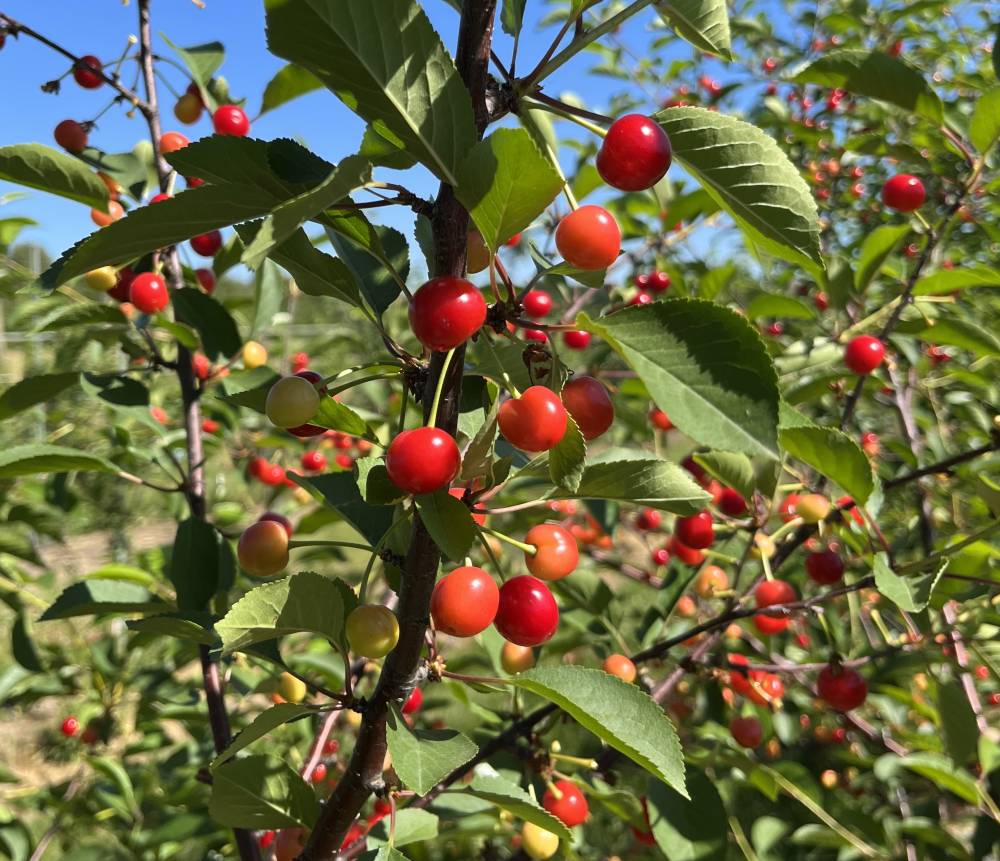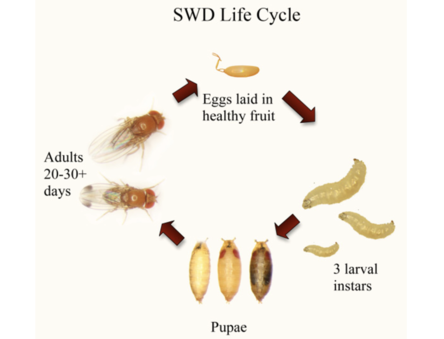Drought is one of the main abiotic stress factors threatening sweet cherry production. This species is particularly sensitive to water stress, largely due to its shallow root system,
especially when using dwarfing rootstocks such as Gisela 5.
A recent study has proposed a new approach to improve sweet cherry resilience to drought by exploiting the potential of a dark septate endophyte (DSE) fungus, identified as S16. Conducted by Chinese researchers, the study integrated physiological, metabolomic, transcriptomic, and rhizosphere microbiome
characterization data, providing a comprehensive and detailed view of the mechanisms activated by the plant–endophyte interaction.
Effects of S16 on plant physiology
Inoculation of Gisela 5 with S16 showed clear effects on growth and physiology, especially under simulated water stress conditions. Treated plants displayed greater root and shoot biomass, increased relative water content (RWC), reduced electrolyte leakage, and higher photosynthetic activity.
Furthermore, an increase in defensive antioxidants was recorded: ROS
levels (H2O2 and O2−) were lower in inoculated plant tissues, thanks to higher activity of enzymes such as superoxide dismutase (SOD), peroxidase (POD), and catalase (CAT).
These results show how S16 can “prime” the plant to respond more effectively to stress
through a genuine physiological and biochemical priming effect.
Metabolomic and transcriptomic responses
A more in-depth metabolomic analysis revealed strong activation of flavonoid and phenylpropanoid biosynthesis, metabolites known for their protective role against oxidative stress. In particular, the content of cinnamic acid (CA), a key metabolite of the phenylpropanoid
pathway, increased significantly in plants treated with S16.
This compound proved so important that it was also tested via exogenous application: CA at 0.5 mM replicated and amplified the beneficial effects observed with fungal inoculation, improving drought tolerance by reducing ROS, increasing proline levels, and activating antioxidant defences.
In parallel, transcriptomic analyses revealed a deep reorganization of the gene expression profile in Gisela 5 roots. Under stress conditions, many genes were upregulated in S16- inoculated plants compared to control. The most involved pathways included amino acid
metabolism (phenylalanine, glycine, threonine), carbohydrate metabolism, lipid metabolism,
and the biosynthesis of flavonoids and anthocyanins.
Microbial community and agricultural prospects
Inoculation with S16, especially when combined with exogenous cinnamic acid treatment, also produced a shift in rhizosphere microbial composition toward a community more favorable to plant health, increasing the abundance of growth-promoting bacteria (including Sphingomonas, Stenotrophobacter, Parcubacteria) and beneficial fungi belonging to the orders Sordariales and Hypocreales, such as Humicola and Fusarium.
This suggests that S16 acts not only at the endophytic level but also influences soil microbiology, creating an
environment that favors plant survival under adverse conditions.
In conclusion, the endophytic fungus S16 has proven to be a promising resource for sweet cherry cultivation in drought-prone environments. Its ability to activate protective metabolic pathways, enhance antioxidant activity, promote the accumulation of key metabolites, and improve the rhizosphere microbial community makes it an ideal candidate for agronomic
applications aimed at improving drought tolerance.
Source: Pang, Q., Qu, D., Li, W., Zhou, J., Yang, Y., Wang, L., Zheng, D., Liu, Y., Zhang, R., Yang, L., Wu, F., Zhang, X., & Su, H. (2025). Muti-omics insights the enhancement of drought tolerance in sweet cherry with dark septate endophyte S16. Plant Physiology and Biochemistry, 222, 109716. https://doi.org/10.1016/j.plaphy.2025.109716
Image source: SL Fruit Service
Andrea Giovannini
University of Bologna (ITA)
Cherry Times - All rights reserved












